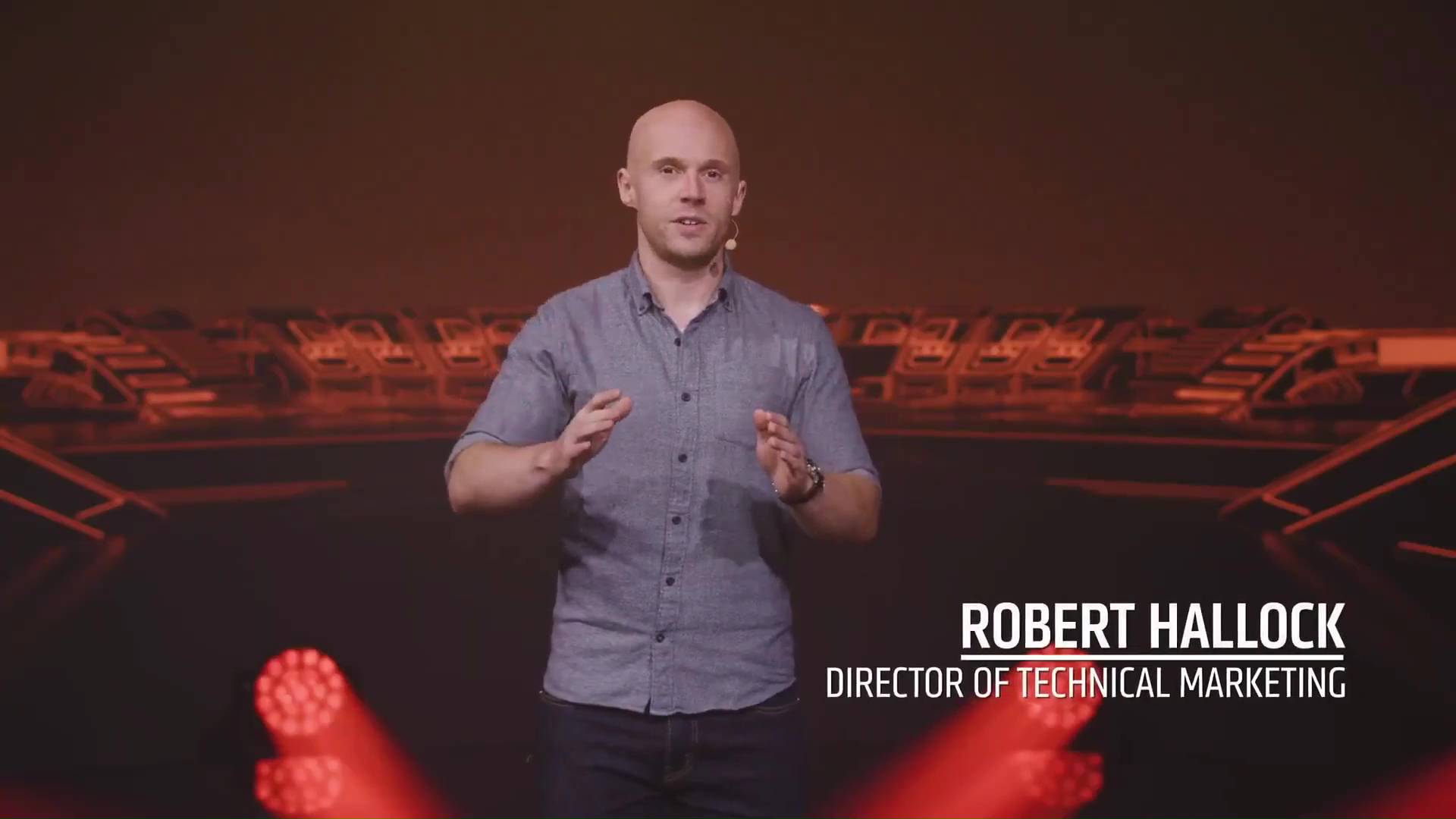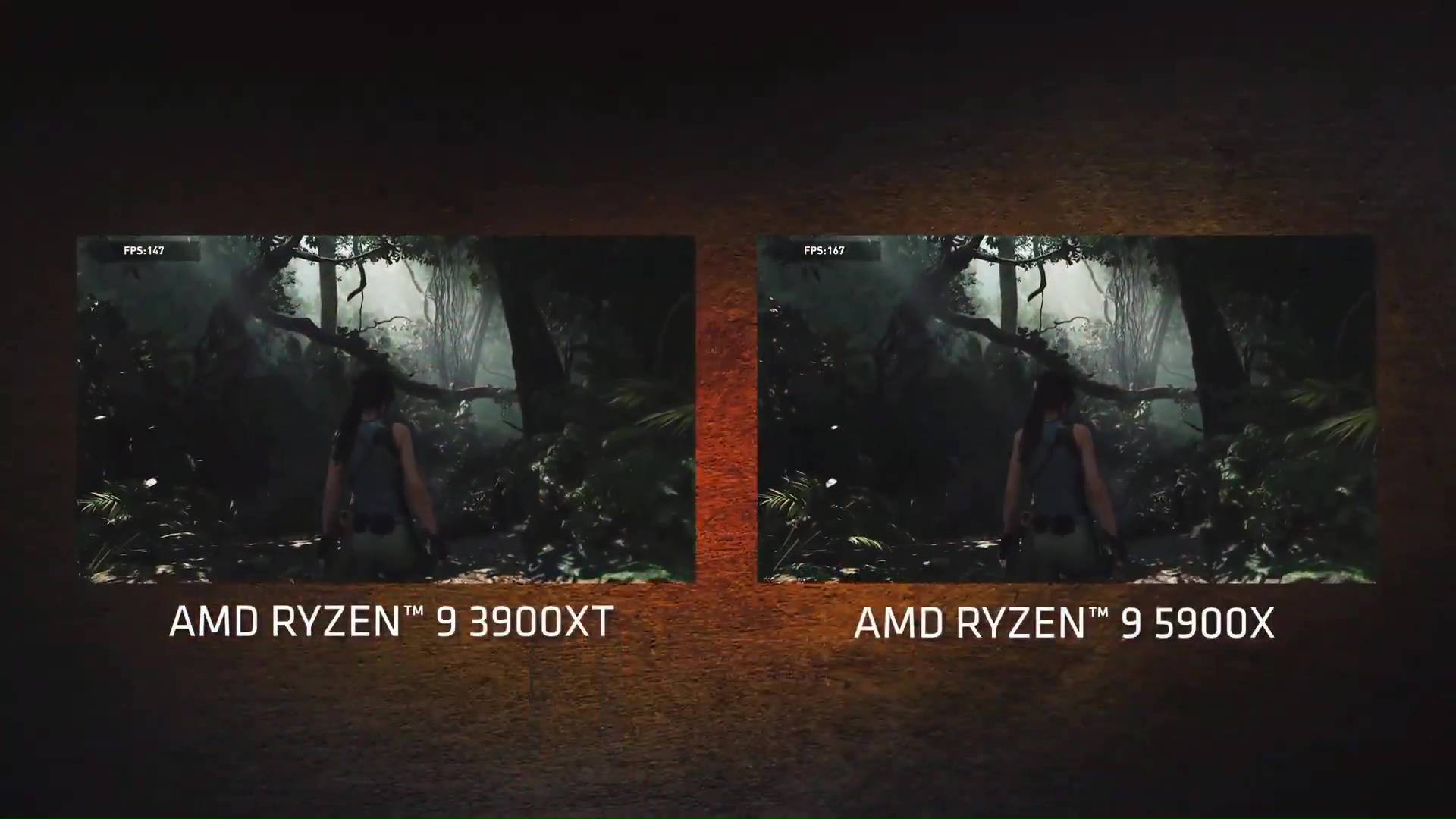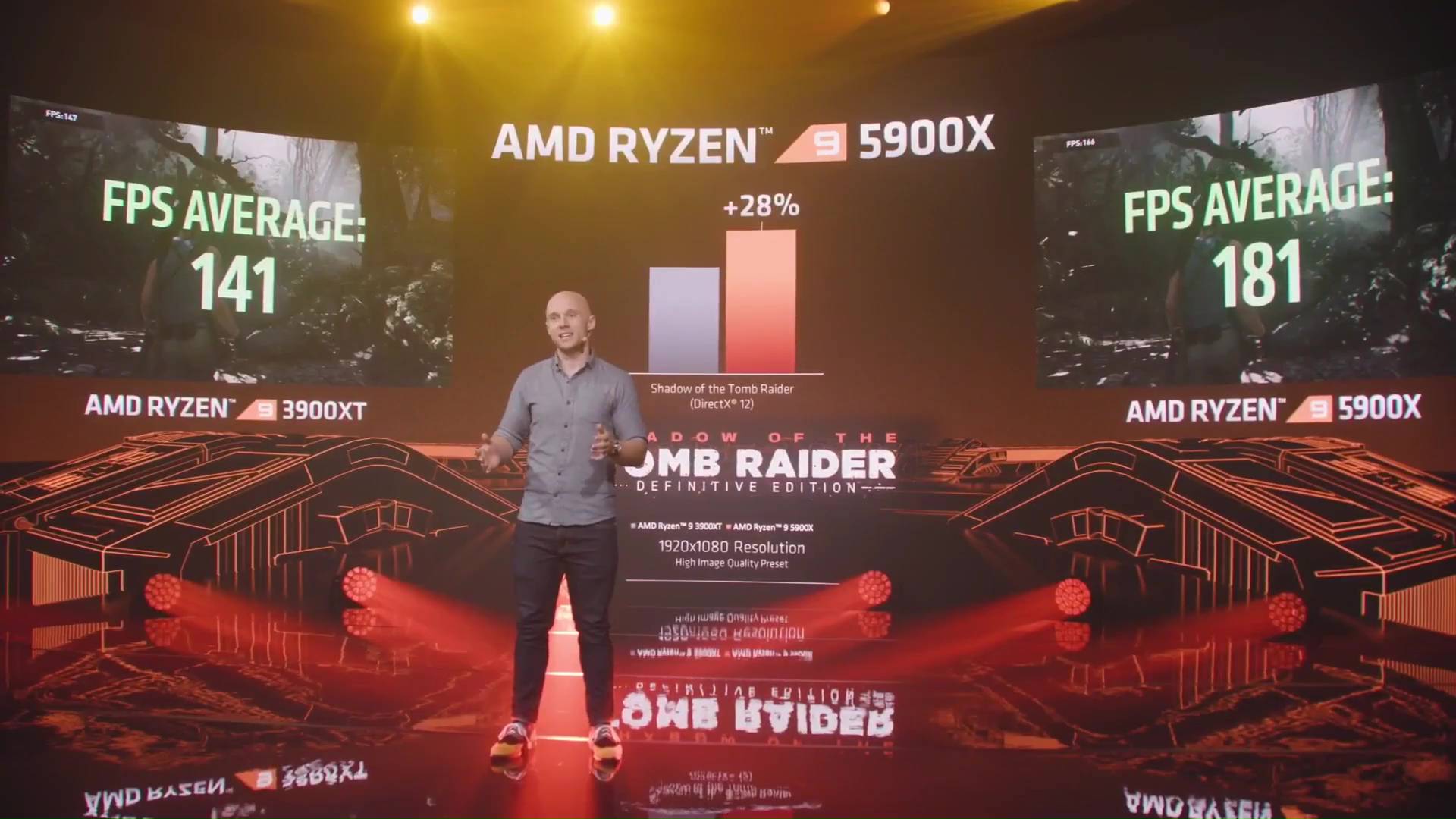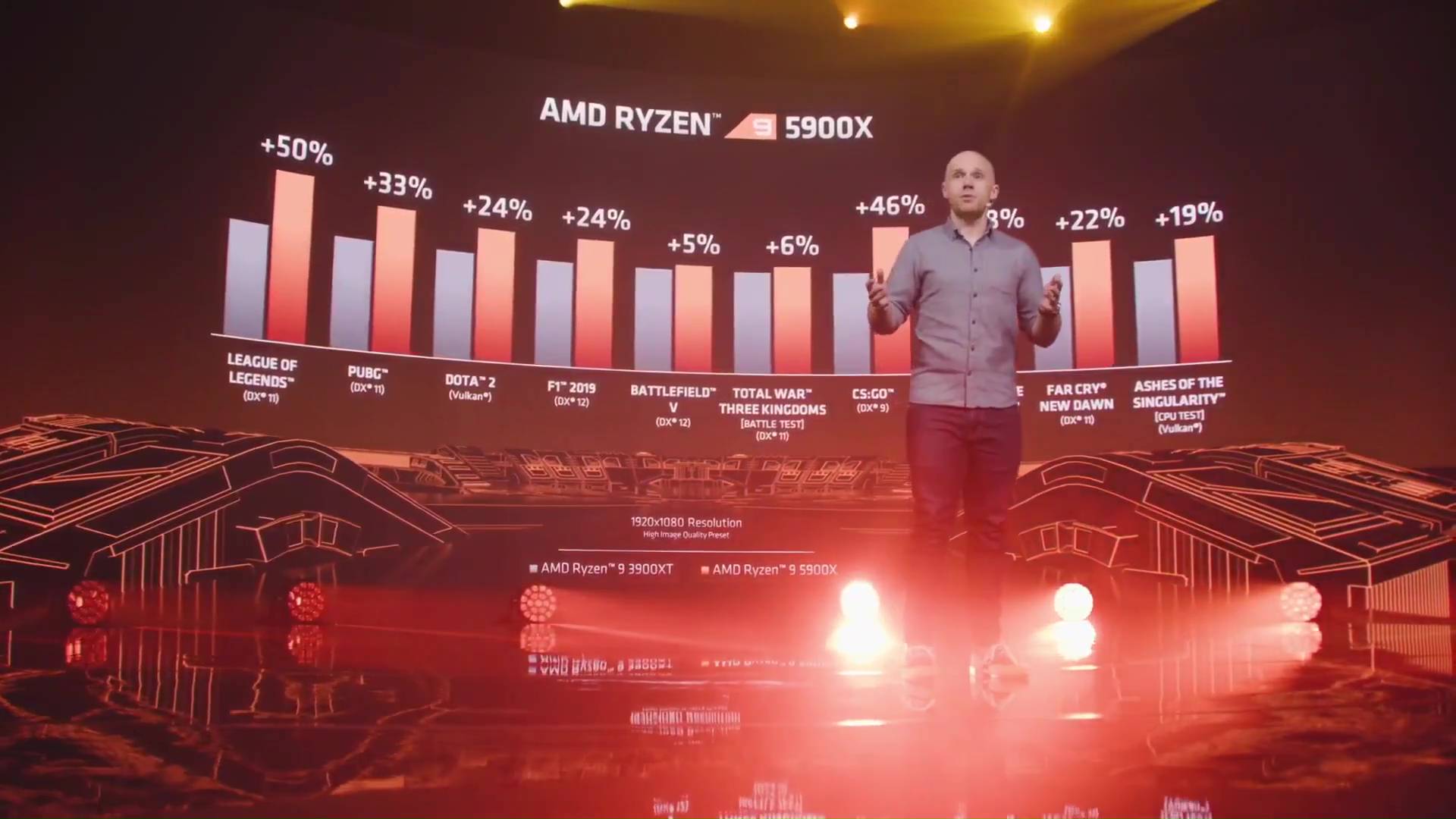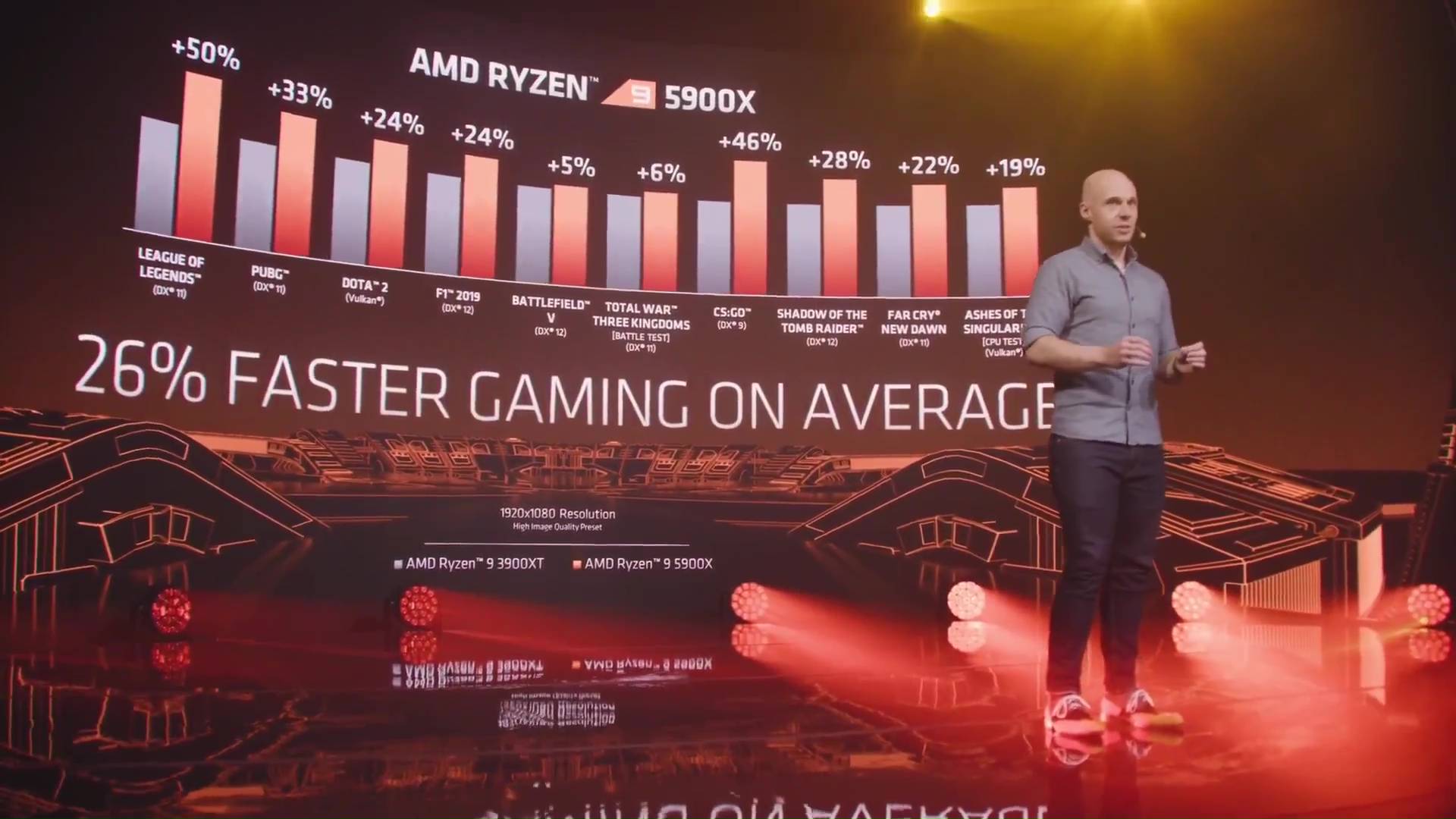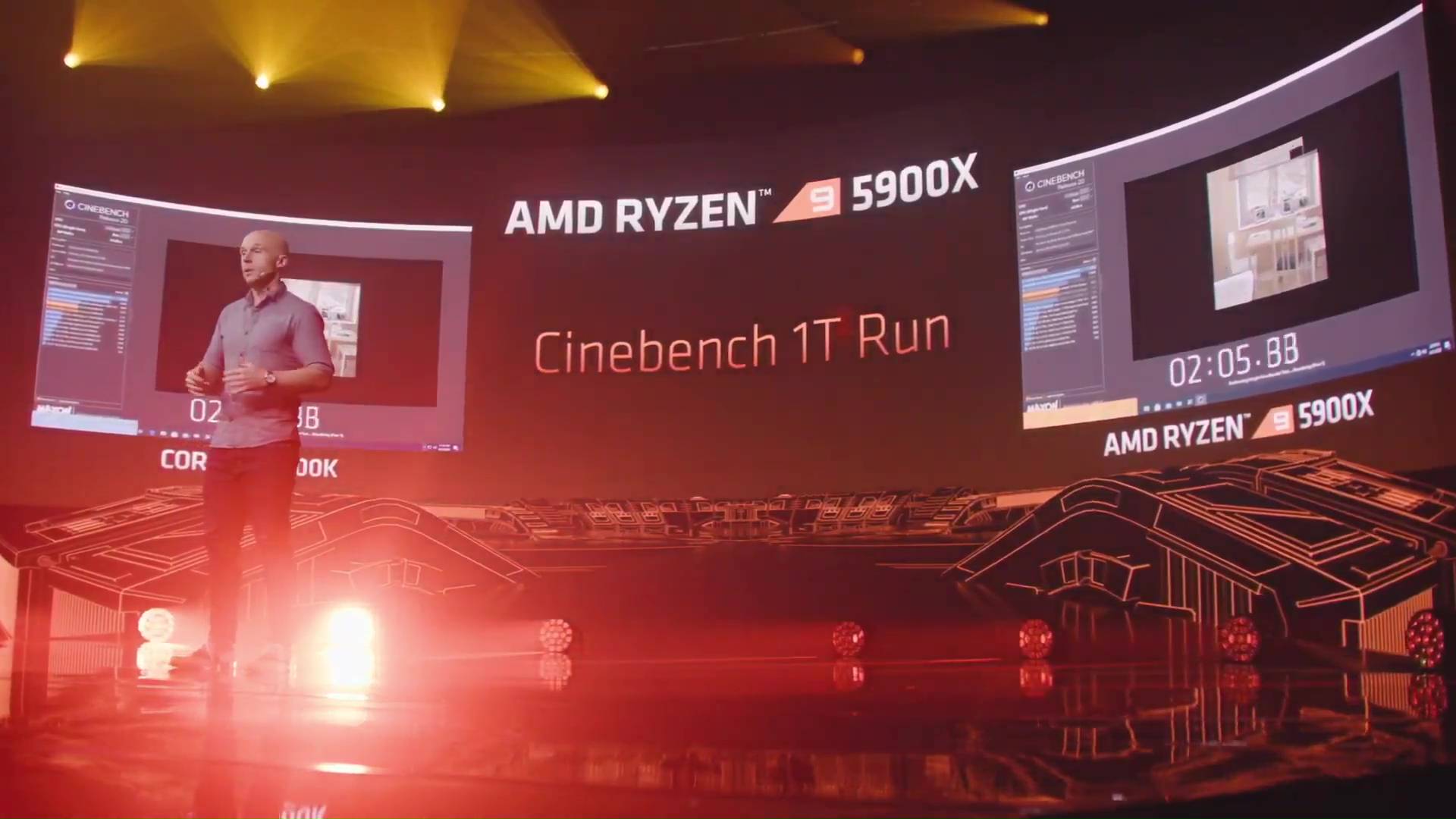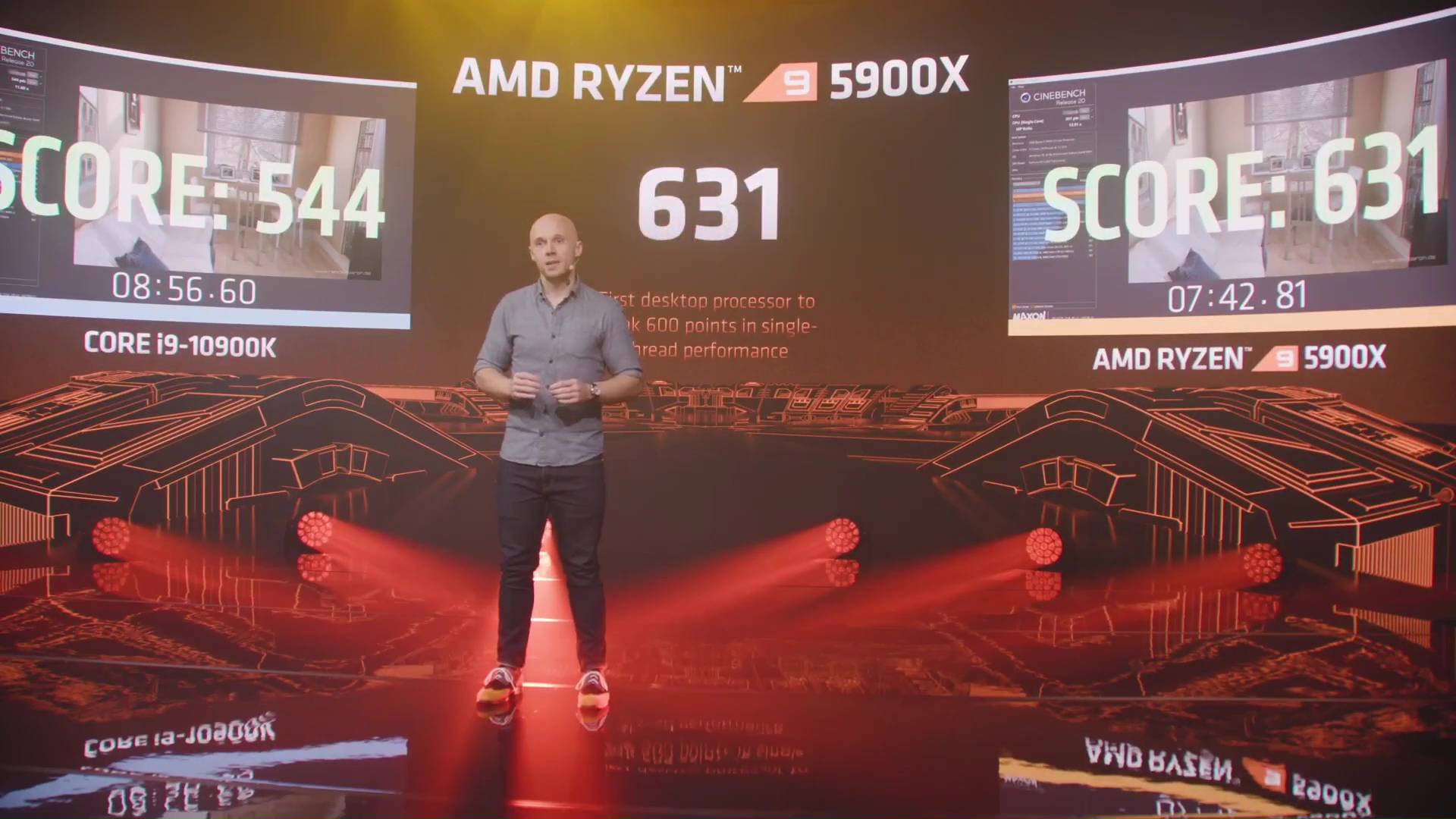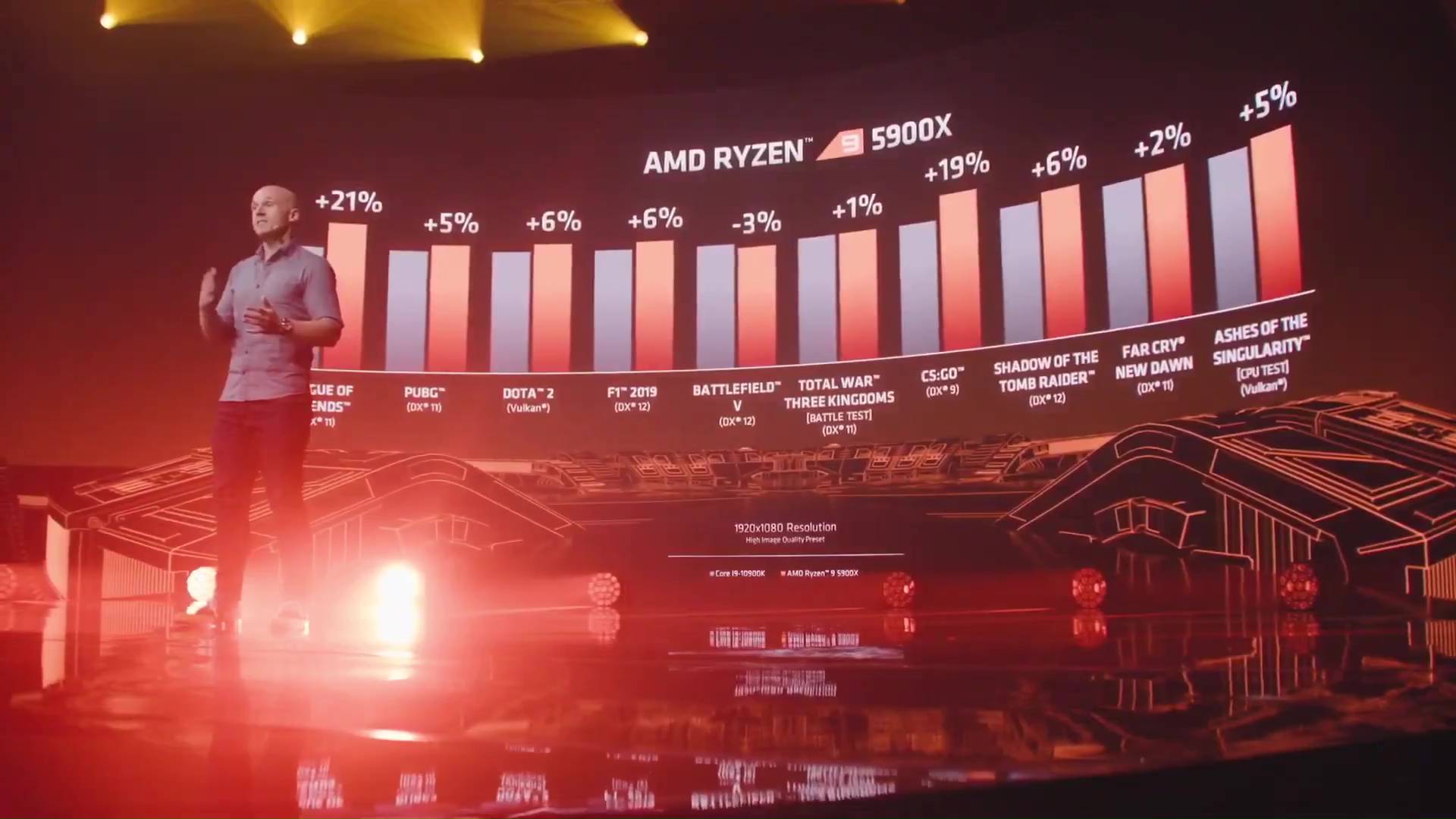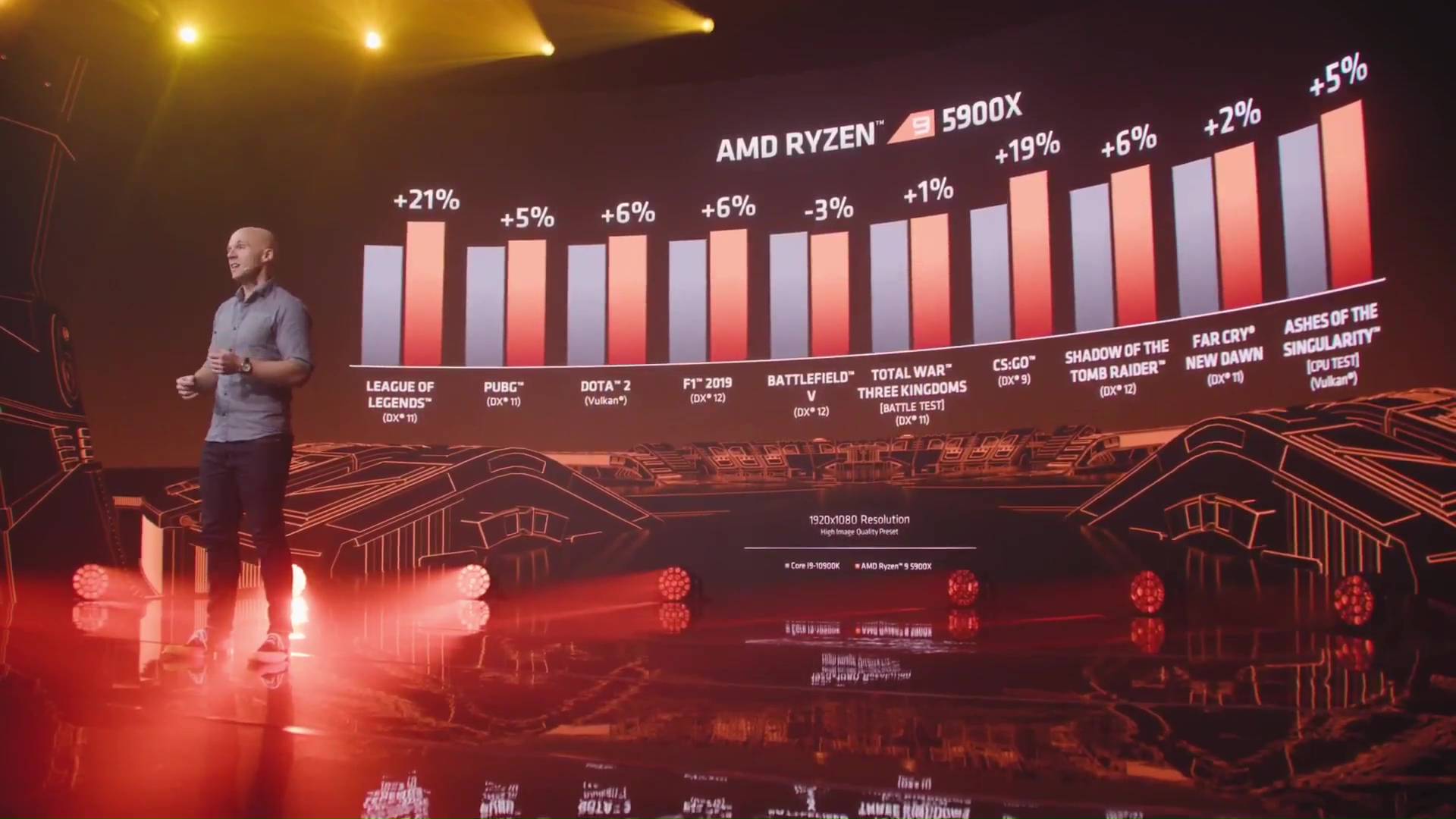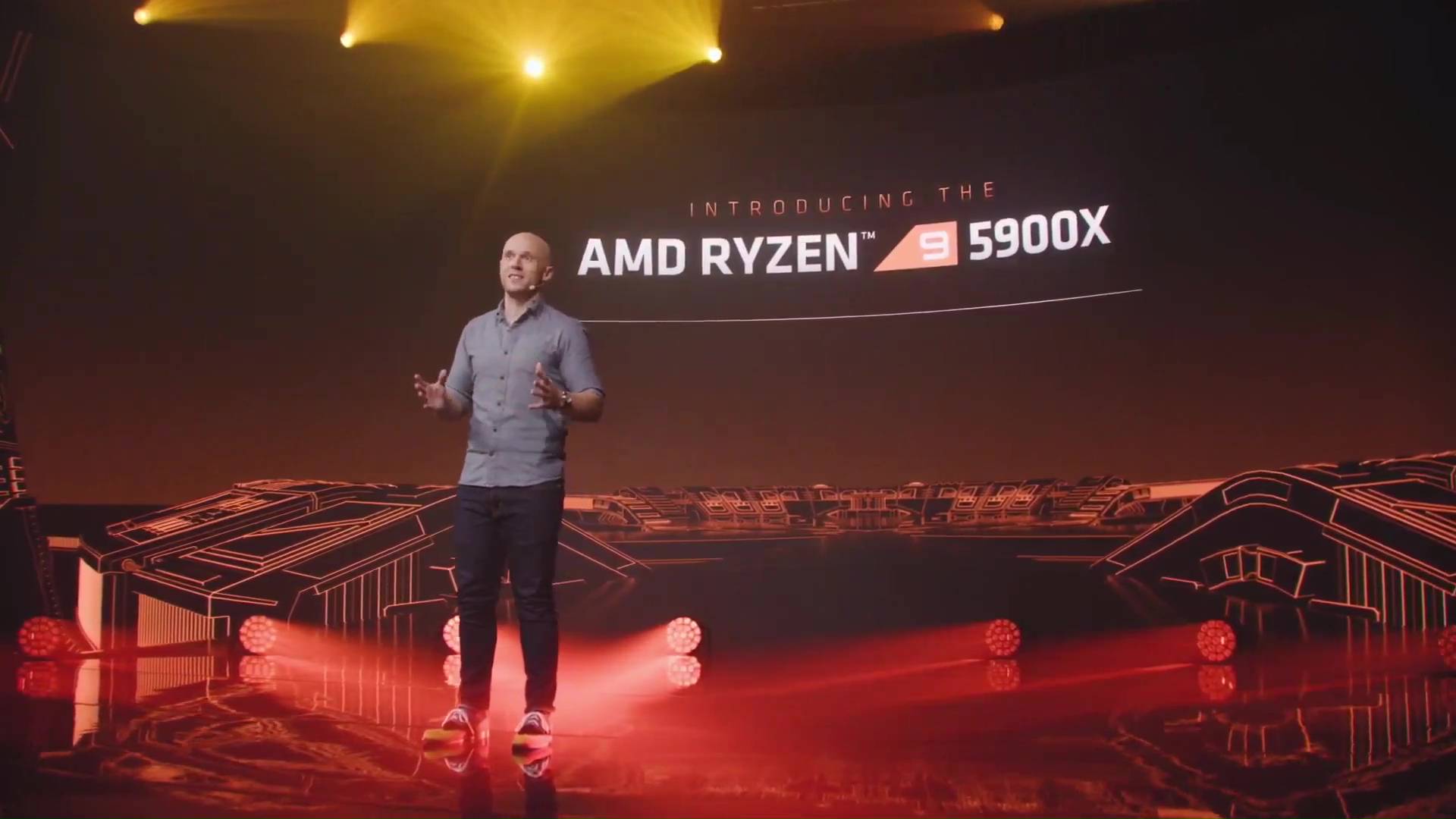Robert: Hey, everyone. Let me give you a sense of just how much faster the 5900X is compared to our current best the 3900XT.
To do that, we’re going to use Shadow of the Tomb Raider — a game that I personally love, and that game reviewers often look at to judge CPU performance.
We’re going to run the built-in benchmark here at 1080p using the high image quality preset on two otherwise identical systems. You can see a whopping 28% increase just by moving from the 3900XT to the 5900X in Shadow of the Tomb Raider.
And as you will soon see, the performance from the 5900X is faster than the competing processors as well. Now as any enthusiast knows 28% from our processor change is a massive upgrade, but that’s what AMD customers like me can look forward to. This truly demonstrates the gaming strength for Zen 3 when you combine the historic IPC uplift, unified cores and unified cache pools..
Now, as we zoom out to look at a wider set of games, you can see that the 28% uplift in Shadow of the Tomb Raider is joined by many titles with significant double-digit performance improvements. The gains are even bigger in titles like CS:GO and League of Legends. With a highest possible framerate it is practically the number one priority to be competitive.
Overall, gamers upgrading from the Ryzen 3000 series to the Ryzen 5000 series can expect an average performance improvement of 26% at 1080p. Again, this is just a monumental performance jump for an in-socket upgrade in the same motherboard and a true testament for how good Zen 3 is in gaming.
Now as many know, strong gaming performance relies on strong single core performance. That’s exactly what Zen 3 has. And I want to show you using Cinebench 1T single thread. There are many ways to assess single thread performance, but Cinebench is a fast and easy tool that you can run at home.
And it’s one of the 25 workloads that we used to calculate the 19% improvement for Zen 3’s instructions per cycle. As you can see, the 5900X is the first desktop processor to ever break a 600 score. We don’t break it by little. We break it by a lot with a score of 631. We at AMD heard you loud and clear as you challenged us to continue investing in single core performance; and the results speak for themselves.
The combination of IPC, frequency, cores and cache give AMD the fastest cores in the desktop market, and give you the best possible gaming performance. So let’s take that landmark core performance into a head-to-head battle across the same set of games you just saw.
The Ryzen 9 5900X is the clear winner at 1080p. As I promised you, AMD wins in Shadow of the Tomb Raider by +6%. And it’s joined by many other games popular with reviewers and users like you. League of Legends and CS:GO are once again, the stand out victories for the Ryzen 9 5900X.
So that was a lot of data very quickly. Let’s take a step back. Let’s recap. You saw an average uplift of 26% for Ryzen customers upgrading from the 3000 series to the 5000 series. You just watched AMD deliver the highest single core performance in the entire desktop PC market. And you just saw AMD clearly offer the best performance of any gaming processor on the market.
I will put it plainly. We know that you’re going to wait for benchmarks, but customers who buy processors purely for their gaming performance will absolutely want to Ryzen 9 5900X for the best possible PC gaming experience.
Now let’s bring Lisa back up to give you more details on these awesome gaming processors.
Hope you enjoyed this article. Please, support Blizzplanet via PayPal or Patreon, and follow us on Twitter, Facebook, YouTube, and Twitch for daily Blizzard games news updates. |
 |

